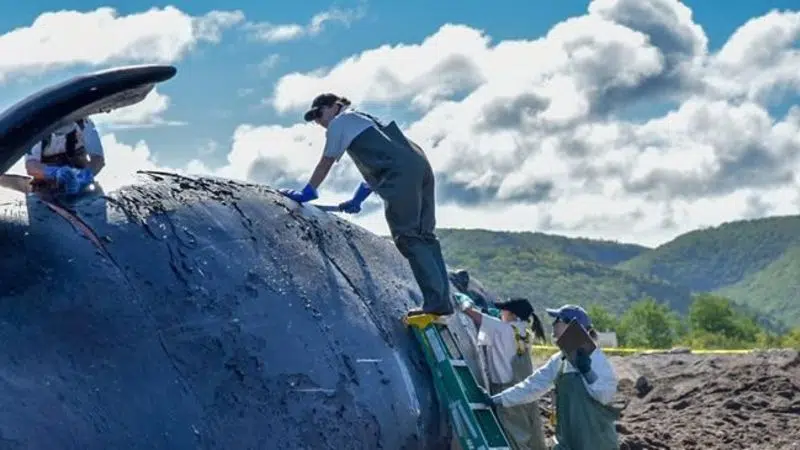
Expert says feds should have acted more quickly on right whale migration
FREDERICTON — Fisheries and Oceans Canada says it has sighted another dead endangered right whale drifting off the Gaspé Peninsula, bringing the total number of deaths in Canadian waters this year to six.
The government was still assessing recovery and necropsy options for this sixth whale.
The new information late Thursday came as an expert said Canadian officials did not respond quickly enough to this year’s migration of North Atlantic right whales.
Laurie Murison, executive director of the Grand Manan Whale and Seabird Research Station, said while vessel speed limits, fishing restrictions and other measures are now in place, they should have come sooner.


